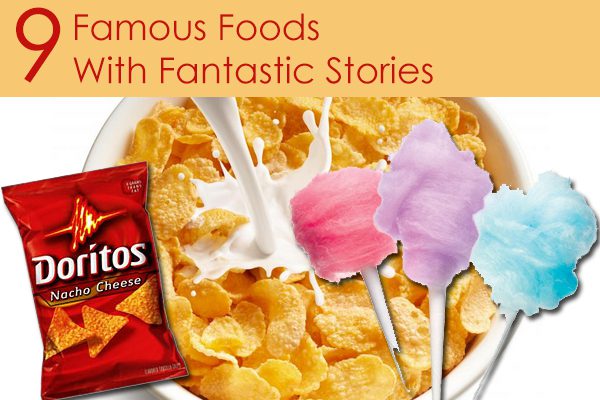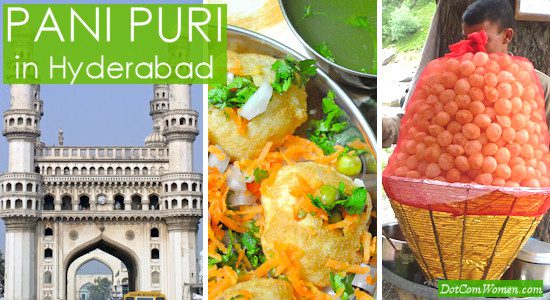9 Famous Foods With Fantastic Stories
Everyone has a favorite food — but not everyone’s favorite food comes with an interesting development story. Some of the most popular treats today exist largely due to a pinch of intrigue and a dash of drama early on in their creation. If you want to know more about the past life of nine popular foods, read on for the dish on your favorite dishes.

1. Doritos
Disneyland has been a pioneering place in many ways — from its animatronics development to its marketing genius — and it has Frontierland to thank for its success in junk food success. A humble Mexican food shop in the Wild West neighborhood of the park inventively repurposed surplus, stale tortillas by frying them into Mexican chips known as totopos. However, Casa de Fritos added unique Mexican seasoning, transforming the treat into a unique, savory snack. The overwhelming popularity in Disneyland gave way to regional and then global production of the now infamous Dorito chip.
2. Corn Flakes
What is now recognized as a rather hum-drum cereal product was once a revolutionary food substance created to cure a wealth of health disorders. In the 19th century, Dr. John Kellogg and his brother William Kellogg developed Corn Flakes to use in the doctor’s Battle Creek Sanitarium, a health resort that attempted to cure various perceived ailments, from over-excited libidos to slow metabolisms. Later, the Kellogg brothers feuded over who actually invented the cereal. Those interested in learning more about the Corn Flakes conflict can read a fictionalized account in T. C. Boyle’s lauded novel “The Road to Wellville.”
3. Caesar Salad
While this ubiquitous salad may contain the distinct flavors of the Mediterranean, it was created thousands of miles from Rome’s ancient shores. The Cardini brothers, Caesar and Alex, who lived in Tijuana, Mexico in the 1920s threw together a salad with Italian ingredients, like Parmesan cheese and anchovies, for their Italian restaurant. Proud of his creation, head chef Caesar renamed what was initially dubbed an “Aviator’s Salad” after himself.
4. Cotton Candy
Ironically, the first machine-spun sugary treat was created at the turn of the century by none other than a dentist. Dr. William Morrison — and his confectioner partner John Wharton — sold cotton candy at the 1904 World’s Fair under the name “Fairy Floss,” perhaps in a thinly veiled attempt to drum up future business.
5. Hershey’s Chocolate
Beloved around the world as a purveyor of fine and affordable chocolaty treats — selling everything from “perfect” Reese’s Peanut Butter Cups to refreshing York Peppermint Patties — Hershey’s Chocolate Company founder Milton Hershey was actually the first chocolatier outside Switzerland to discover the recipe for milk chocolate. The ingredients and ratios of milk chocolate had been closely guarded by Swiss confectioners for centuries, so when Hershey began mass producing the treat in its now-iconic brown and foil wrapper, he became an instant success. Those with a sweet tooth can learn more about the history of America’s favorite candy company at Las Vegas’s new Hershey’s Chocolate World store.
6. 7-Up
There are dozens of lemon-lime flavored soft drinks on the market today, but in the early 20th century, 7-Up was rather novel. However, the drink became popular not for its refreshing taste but its medicinal possibilities; business mogul and chemical engineer Charles Grigg included in his recipe lithium citrate, which is and was a known mood stabilizing drug. 7-Up, which was initially marketed under the exasperating moniker “Bib-Label Lithiated Lemon-Lime Soda,” and was intended to cure hangovers, until lithium citrate was removed in the late 1948s.
7. Fanta
Speaking of soda, this notable line of soft drinks was initially a product of Nazi Germany. The CEO of Germany’s branch of Coca-Cola, Max Keith, was dismayed from the loss of supplies to create the iconic soda after the United States entered World War II. Thus, using leftover ingredients, Keith and his workers invented an entirely new line of soft drinks in Fanta’s fruity flavors.
8. German Chocolate Cake
It is possible that millions of ethnic German-Americans have baked this decadent treat in honor of their Eastern European heritage — but it turns out that German chocolate cake isn’t German at all. In fact, the cake is named after Samuel German, a chocolatier who developed the baking chocolate used in the cake’s original recipe.
9. Heinz 57 Varieties
The label on every bottle of Heinz gleefully boasts of the company’s legendary “57 Varieties.” However, the number is in reality a random choice. Henry Heinz, the company’s founder, was tickled by a particularly crafty advertisement for “21 styles of shoes” and decided to implement the same strategy for his condiments. Even then, Heinz produced more than 60 different products, from catsups to relishes, but Heinz decided to combine his favorite number, five, with his wife’s lucky number, seven, to market his wares.

